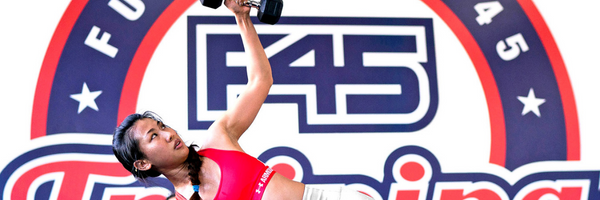What’s missing? The repetitive boom and bust cycle of fitness business models
It looks like the Australian originated, global fitness franchise F45 is getting very wobbly at the business end.
Can’t say I’m surprised, but it’s disappointing. Disappointing for those who have chosen to put their careers, businesses, and money into this path.
Some background to boom and bust.
The fledging fitness industry was very young in Australia when we witnessed the arrival of a new beast – the US modeled fitness center –
In the late 1970s and early 1980s, slick, glitzy fitness centres modelled on US gyms appeared around Australia at a rapid pace…. Membership agreements and contracts were often deliberately vague and many clients paid hundreds of dollars for badly planned and ineffective courses. [1]
My first personal exposure to this boom-and-bust fitness industry was in the early 1980s when my exercise physiology tutor was hired to consult to a new fitness chain named ‘Vigor’, and hired me to help him. He must have liked what he saw in the fitness chain because he then purchased a franchise. A year or so later, it collapsed.
The wheels started to fall off the fitness boom in 1983-84….The first significant fitness failure was the Vigor group in NSW and Victoria, which collapsed in 1984. Several small, independently run gyms soon followed. In the second half of 1984, the John Valentine chain of seven clubs (six in NSW) crashed, owing creditors and customers $1.6 million [2]
It was incredibly coincidental that I was part of that history, and very helpful because it gave me a perspective that would serve as many flashy and attractive fitness industry business models boomed – and the busted.
The list of fitness industry boom busts business is long. Some of the bigger more recent cases in the US have been Bally Fitness (filed for bankruptcy in 2007)[3], and 24 Hour Fitness[4] (filed for bankruptcy in 2020).
What’s missing?
Everyone’s going to have their own theories on what is behind this fitness industry business model boom and bust cycle.
Here are some thoughts:
Business model commission structure
Maybe it’s the commission model of the business structure? In the case of F45, the CEO Adam Gilchrist apparently earned $500m AUD when the company floated on the NYSE.
F45 fitness founder and CEO Adam Gilchrist has just become one of the wealthiest people in Australia after a staggering result from floating his company on the New York Stock Exchange…F45 is valued at $US1.4 billion ($A1.9 billion) after it was put up for $US325 million ($A437 million) in its initial public offering on the New York Stock exchange at Thursday local time. Shares skyrocketed to $US17.75 ($A24 million) from their $US17 open, before closing on Thursday at $US16.2. Considering Mr Gilchrist holds 28.9 million shares in the company, that means he made around $US371 million ($A500 million) in one day.
And the founder, Rob Deutsch apparently pocked $67m AUD when he sold out in 2019.[5]
Sure, the franchisees made profit along the way – at least until they didn’t – however was the business model sustainable?
Same product, different packaging
Essentially F45 was another group training fitness model. With unique color in the logo, clean lines in the branding. So same package, different packaging.
For decades fitness industry business models have competed on price, equipment, space, and appearances. If that is all they have to differentiate themselves, perhaps this is not enough?
Serving the needs
Some suggest this group fitness model meets the needs of those who need to be ‘motivated’, and who seek social interaction of group fitness. This is a reasonable argument. But at what stage does value adding stop and start.
Let’s imagine you had 100 people with knee pain. There are going to be individual differences in the needs of each of those 100 people. But let’s say the only alternative they have is to go to a group class for rehab. It’s better than nothing, until its not. Until they realize their bodies specific needs are not getting met. Until they realize they are still in pain. Until someone comes up with a better way to serve their needs.
Perhaps one day the industry will choice the needs of the individual over short-term profit for a few?
Interestingly…
Apparently F45 used my 3-digit timing system as an integral part of their training systems. Imagine if our industry could adopt the musical or similar creative industries values and procedures where intellectual property and royalties are taken seriously.
Conclusion
F45 are not the first and won’t be the last in the fitness industry business models to boom and bust Our goal with our KSI Coach Education is to guide our coaches towards sustainable business models. Whatever F45 and the others have done is not sustainable. Somethings missing.
What do you think is missing?
References
[1] https://www.afr.com/companies/fitness-industry-gets-back-in-shape-19890811-kaiza
[2] https://www.afr.com/companies/fitness-industry-gets-back-in-shape-19890811-kaiza
[3] https://en.wikipedia.org/wiki/Bally_Total_Fitness
[4] https://www.latimes.com/business/story/2020-06-15/24-hour-fitness-bankruptcy-coronavirus-gyms-closed
[5] https://www.dailymail.co.uk/news/article-10678759/F45-gym-founder-sells-three-storey-ultimate-bachelor-pad-Sydney-mansion-18m-Rob-Deutsch.html



